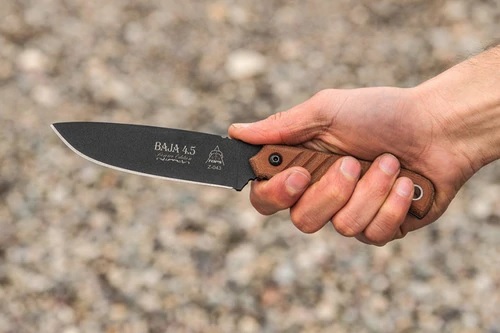Bushcraft has become a popular word in recent years, but this practice is truly as old as mankind. The concept of bushcraft is an umbrella term that covers all wilderness survival and outdoor skills. One of the most essential tools in bushcraft is a good knife. If you are looking for the Best Bushcraft Knife, you will find a lot of opinions online. Almost everyone can agree that you should never go into the wilderness without a good fixed blade knife on your hip, but it’s important to make sure that your knife is the perfect fit for you.
One of the first things to consider when choosing a bushcraft knife is size. There are plenty of arguments to be made for both small and large bushcraft knives. If you are looking for a knife that will handle the largest number of bushcraft tasks, you need a medium sized knife, preferably one that is 8 to 12 inches in overall length. If being able to perform fine tasks or tackle large jobs is important to you, carrying more than one knife in your pack is worth considering.
Now that you know what length you are looking for, let’s talk about construction. A good bushcraft knife has to have a full tang blade. This means that the metal used in the blade is continuous in the entire handle. This creates significantly stronger knives, but the process involves using more material than knives made with partial tangs or thin rat tangs.
You are also going to want to consider the handle materials used on your full tang knife. Wooden handle scales provide a gorgeous and traditional appearance, but typically they do not provide the durability of synthetic materials. Modern laminated materials like micarta handle scales and G10 handles are a great option. Both of these handle materials are created under high pressure by laminating woven materials saturated with epoxy resin. This makes these handles the perfect choice for users looking for handles that are sturdy and corrosion resistant.
Great handles are important, but it’s the metal in between them that is going to be doing the heavy lifting. There are a lot of opinions on the perfect metal for a bushcraft knife. Some users are going to swear by modern alloys and stainless steel blades, but there is a huge following behind carbon steel blades such as 1095, A2 and CPM 3V. While not stainless, 1095 and A2 sharpens quickly and holds its edge well while 3V holds an edge better and provides exceptional lateral strength, it does require more time to sharpen.
One of the most important, and most subjective factors, when choosing the best bushcraft knife is the blade design. If you use a ferro rod for fire starting, you may want a knife with a 90 degree sharpened angle on the spine. Many bushcraft enthusiasts prefer the sturdiness and edge geometry of a scandi grind over a flat grind because it preserves more of the blade material and is typically more suitable for woodcraft. A saber grind blade is also popular as it provides more angle on the flats than a flat grind helping with splitting tasks while still being a great slicing blade. Typically, a spear point or drop point blade is recommended, though some users will prefer a clip point or a straight back blade.
No matter which blade style you prefer, you can find a huge variety of amazing knives at The Knife Connection. They have thousands of knives in their online store so you can always find the best bushcraft knife for you. If you have any questions about the knives they offer, you can reach out to a member of their team by calling 1-866-336-2834 or sending an email to support@theknifeconenction.com.
For more information about Great Eastern Cutlery Knives and The Perfect Survival Knife Please visit: The Knife Connection.

